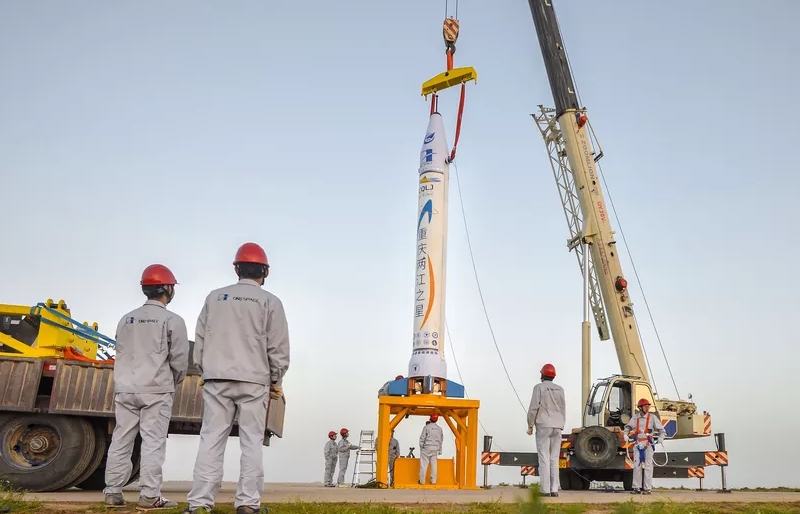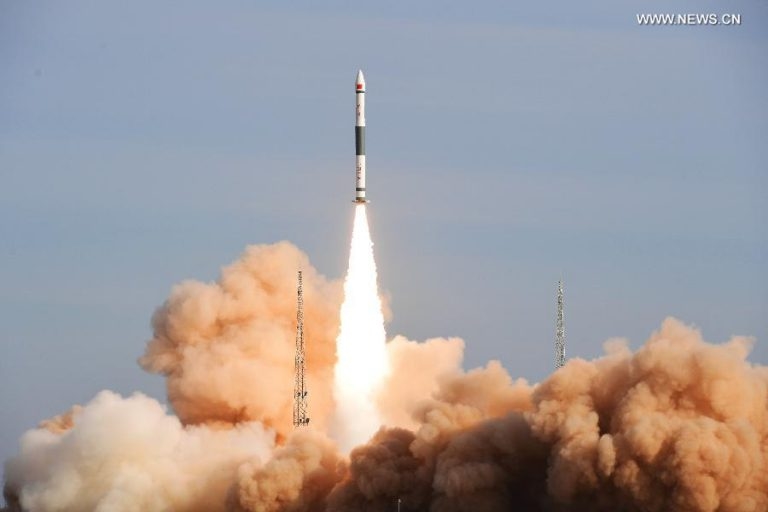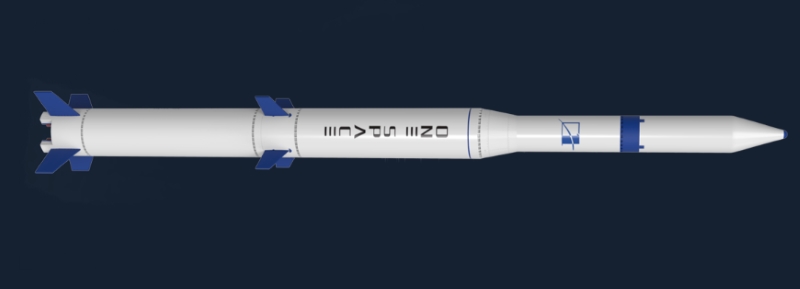The recent test suborbital rocket flight of the private Chinese space company OneSpace has previously detected an inconspicuous trend - there are space private traders in China, and they are developing very actively. In the coming years we will see a new space race of private companies in the USA and China. And what do we know about the Chinese private traders?
 Photo by Wan Nan / Chongqing Daily / VCG
Photo by Wan Nan / Chongqing Daily / VCGThe erroneous opinion is quite common that the space program in China is only state-owned. In fact, back in 2014, the government officially allowed private companies to develop launch vehicles for launching satellites. And to date, several companies can already show their achievements.
ExPace
More recently, the first private company was
called ExPace (ExPace Technology Corporation), founded in February 2016. But private owners that have become known now point to earlier dates on their websites, so the question of who was really the first one still awaits its researcher. In addition, ExPace has a feature that does not allow us to consider it truly based from scratch - it was isolated (and is a subsidiary) of the state-owned China Aerospace Science and Industry Corporation (CASIC). The result was a paradox - the company, founded in 2016, is engaged in the Quaizhou launch vehicle (“fast boat”), which first flew in 2013.
 Launch of Quaizhou PH, photo News.cn
Launch of Quaizhou PH, photo News.cnThe launch vehicle has already started three times, in 2013, 2014 and 2017. In versions KZ-1 and KZ-1A, it can put ~ 200-500 kg into orbit. For 2018, it is planned to launch a heavier version of the KZ-11, which can lift one and a half tons to a low orbit.
Onespace
OneSpace was founded from scratch, but with the support of the State Defense Science, Technology and Industry Administration. On May 16, they successfully launched a technology demonstrator OS-X0, which managed to climb 39 km.
The single-stage rocket has a mass of 7,200 kg, a height of 9 meters and uses a solid-fuel engine. According to information from the official site for launching the payload, it is planned to create an OS-M booster that can deliver up to 205 kg into a low orbit 300 km high or up to 143 kg into a sun-synchronous orbit.
 Booster OS-M, drawing from the official site
Booster OS-M, drawing from the official siteOneSpace is a very young company, established in August 2015. However, they already have a central office in Beijing, a manufacturing and research base in Chongqing and a testing ground in Jiangxi Province. They also write that they collected 100 million yuan (~ $ 15 million) in 2016 and 200 million yuan (~ $ 30 million) in 2018. The fact that they experienced the first solid-fuel engine in 2017, and the liquid - this year.
Landspace
This company was
founded in 2015 by Tsinghua University, which regularly ranks first in the ranking of Chinese universities. In 2017, LandSpace contracted a payload with a Danish company, and in April of this year, at the first symposium of Chinese private astronautics, it announced an oxygen-methane TQ-2 engine with 70 tons of rocket and a ZQ-2 rocket based on it. As expected, ZQ-2 will be able to put 3.6 tons into low orbit, and 1.5 tons into solar synchronization, which will make it an order of magnitude (approximately 10 times) more load-lifting than the American / New Zealand PH Electron.
 TQ-2 engine
TQ-2 engineYou can find older plans to create a LandSpace-1 rocket with an expected first launch date of 2018, but it looks like they are no longer relevant.
LinkSpace
Founded in 2014, LinkSpace plays along with stereotypes about Chinese copying foreign technology, because it is directly inspired by SpaceX designs. In fact, their rocket is not a copy, because it is very different in size and will use engines, control system and other things of its own design. Although in their new renderers, they reproduced not only technical solutions in the form of landing supports and trellis steering wheels, but even the color changes of the Falcon 9 Block 5.
 Source: Company Twitter
Source: Company TwitterThe rocket New Line 1 is expected to be able to put ~ 200 kg into a sun-synchronous orbit and in this parameter will be a direct competitor of the PH Electron.
Now LinkSpace is testing test stands for vertical take-off and landing and promises to show the flight of a reusable rocket (most likely suborbital) already this year.
Conclusion
China has long vividly refuted stereotypes about illiterate workers who manually make copies of Western goods for pennies - in the field of high-tech consumer electronics in many areas, he is already a leader, and with his own unique developments. Household appliances Xiaomi is unparalleled in terms of price / quality ratio, DJI drones are the industry standard (and, I remind, Western GoPro could not enter this market with its KARMA drone), electric scooters, monowheels and other personal electric vehicles of Chinese firms are also the best in the world . So, in the place of Western private space companies, I would become seriously worried - the speed of creating new technology in China suggests that in the coming years, Chinese private space companies will become a very serious competitor.